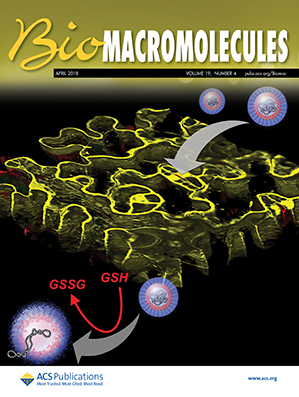PLA Block Polymers: Versatile Materials for a Sustainable Future
IF 5.4
2区 化学
Q1 BIOCHEMISTRY & MOLECULAR BIOLOGY
引用次数: 0
Abstract
Block polymers present an almost endless realm of possibilities to develop functional materials for myriad applications. The established self-assembly of block polymers allows researchers to access properties that are inaccessible in homopolymers. However, there is a need to develop more sustainable options than the current commodity block polymers. Derived from renewable resources and industrially compostable, poly(lactide) (PLA) is at the forefront of technological advancements in sustainable block polymers. Its material properties including high stiffness, relatively high glass transition temperature, and semicrystallinity in isotactic versions lend themselves to many applications, and its ease of synthesis provides a well-established platform for developing high-performance materials. This Perspective highlights recent advancements associated with PLA-containing block polymers, including their syntheses, mesostructural considerations, and mechanical properties, from resilient elastomers to tough plastics. We also give our perspective on the subfield of PLA block polymers, our outlook on the future, and our assessment of exciting developments yet to come.
- Download: Download high-res image (86KB)
- Download: Download full-size image
聚乳酸嵌段聚合物:可持续未来的多用途材料。
嵌段聚合物为开发各种应用的功能材料提供了几乎无限的可能性。嵌段聚合物的自组装使研究人员能够获得均聚物无法获得的特性。然而,有必要开发比目前的商品块状聚合物更可持续的选择。聚(丙交酯)(PLA)来源于可再生资源和工业堆肥,是可持续嵌段聚合物技术进步的前沿。其材料特性包括高刚度,相对较高的玻璃化转变温度和等规版本的半结晶度,使其具有许多应用,其易于合成为开发高性能材料提供了一个完善的平台。本展望重点介绍了含pla嵌段聚合物的最新进展,包括它们的合成、细观结构考虑以及从弹性弹性体到坚韧塑料的机械性能。我们还给出了我们对PLA嵌段聚合物子领域的看法,我们对未来的展望,以及我们对未来令人兴奋的发展的评估。
本文章由计算机程序翻译,如有差异,请以英文原文为准。
求助全文
约1分钟内获得全文
求助全文
来源期刊

Biomacromolecules
化学-高分子科学
CiteScore
10.60
自引率
4.80%
发文量
417
审稿时长
1.6 months
期刊介绍:
Biomacromolecules is a leading forum for the dissemination of cutting-edge research at the interface of polymer science and biology. Submissions to Biomacromolecules should contain strong elements of innovation in terms of macromolecular design, synthesis and characterization, or in the application of polymer materials to biology and medicine.
Topics covered by Biomacromolecules include, but are not exclusively limited to: sustainable polymers, polymers based on natural and renewable resources, degradable polymers, polymer conjugates, polymeric drugs, polymers in biocatalysis, biomacromolecular assembly, biomimetic polymers, polymer-biomineral hybrids, biomimetic-polymer processing, polymer recycling, bioactive polymer surfaces, original polymer design for biomedical applications such as immunotherapy, drug delivery, gene delivery, antimicrobial applications, diagnostic imaging and biosensing, polymers in tissue engineering and regenerative medicine, polymeric scaffolds and hydrogels for cell culture and delivery.
 求助内容:
求助内容: 应助结果提醒方式:
应助结果提醒方式:


